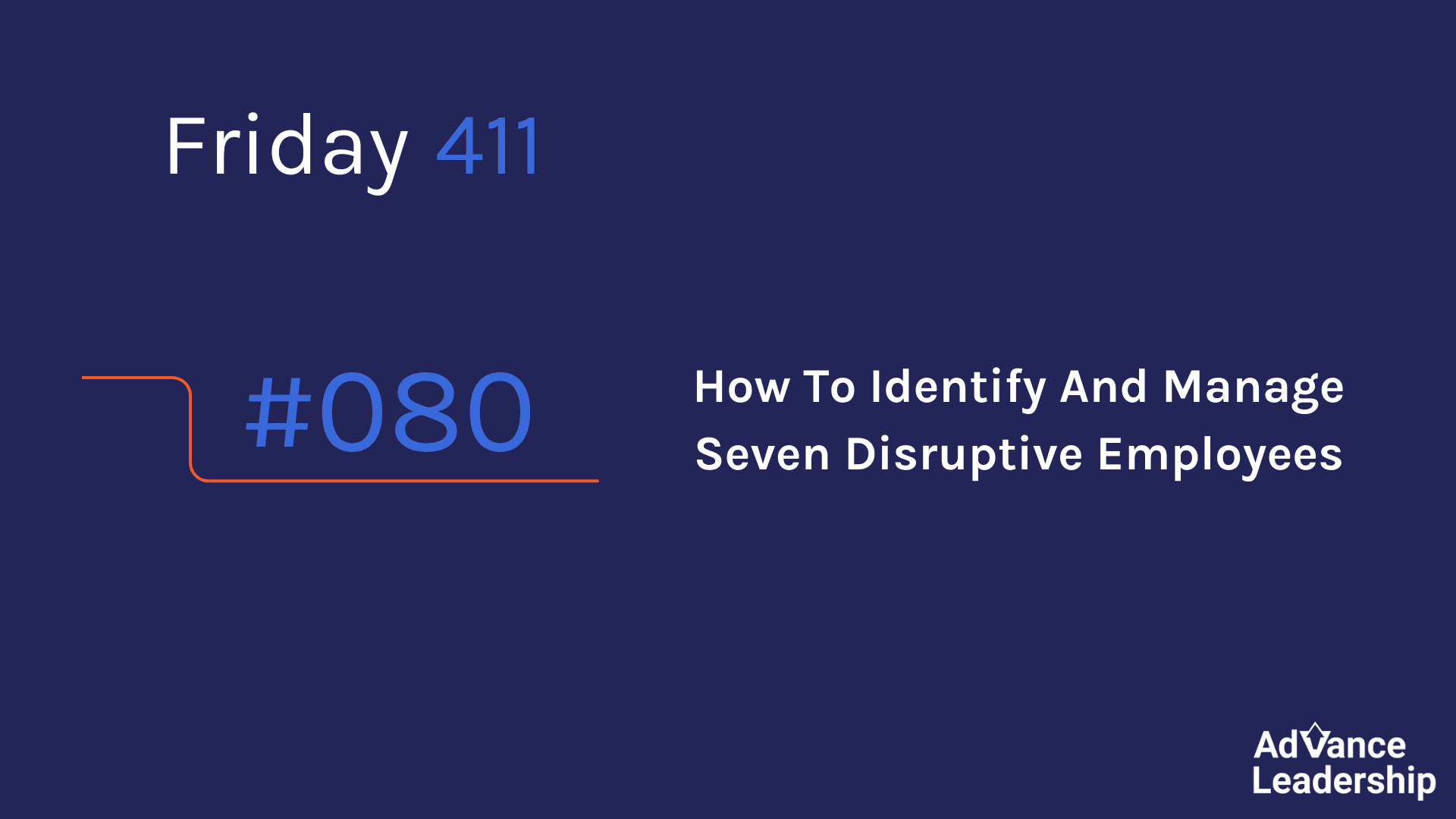Welcome to Friday 411, Issue #080. In 4 minutes, with 1 insight and 1 action, you will increase your team’s morale and productivity.
1 Insight
Some employees who appear to be healthy contributors may actually cause underlying damage to your team.
This summer, our family enjoyed a soul-nourishing vacation in beautiful southwest Virginia. One of our favorite activities on planet Earth is biking the Virginia Creeper trail. (We recommend adding this activity to your bucket list.)
Winding on mountain roads to the trailhead, we passed through landscape dense with abundant foliage. Everything around us brimmed verdant and vibrant. But we southerners knew our green surroundings were deceptive. In reality, this area that appeared healthy was suffocated and dying, choked out by kudzu.
What is Kudzu?
If you’re unfamiliar with kudzu, it appears to contribute to its environment. Originating from Asia, kudzu was introduced to the United States in the late 19th century as an ornamental plant. Later, it was used for soil erosion control. Today, kudzu covers millions of acres, primarily across the southeastern United States. It grows at an astonishing rate — up to one foot per day. This invasive vine can blanket entire landscapes in a few weeks.

Kudzu’s lush, green leaves and rapid growth creates the illusion of health, but it invades and overtakes ecosystems, smothering native plants. Its rapid expansion can quickly cover trees and even buildings. It suffocates native vegetation by depriving it of sunlight and nutrients. Furthermore, it has an extensive root system that makes eradication of the hostile plant exasperating.

As we drove through the mountain roads bordered by miles of kudzu, the two of us started a leadership conversation. (Maybe this is why our kids think we are dorks.) The kudzu reminded us of a common illusion many of our clients struggle with: employees who appear to benefit a company, but whose behaviors damage and destroy their team.
Seven Types of Kudzu Employees
These Kudzu Employees appear like they are contributing. But underneath, they smother the growth and success of everyone around them.
There are seven types of Kudzu Employees:
1. The High Performer Who Everyone Hates
- Outward appearance—consistently delivers outstanding individual results and often has best numbers on team.
- Destructive behaviors—aggressive attitude, fails to collaborate with team, tendency to belittle colleagues, withhold praise or take undue credit.
- Consequence—decreased morale and cooperation among team members.
2. The Low Performer Who Everyone Loves
- Outward appearance—easy to get along with, likable.
- Destructive behavior—poor performance and over-reliance on help from teammates.
- Consequence—others pick up slack to make up for lack of productivity.
3. The Yes Person
- Outward appearance—always agreeable, easy-to-work-with team player.
- Destructive behavior—refusal to engage in healthy conflict that produces better results.
- Consequence—prevents team from addressing and dealing with significant issues by neglecting important discussions.
4. The Passive-Aggressive Person
- Outward appearance—cooperative and committed, similar to The Yes Person.
- Destructive behavior—talks out of both sides of their mouth by supporting decisions during meetings and undermining them in the “meeting after the meeting.”
- Consequence—creates an atmosphere of uncertainty and division toward new goals, reducing the likelihood of accomplishing them.
5. The Coaster
- Outward appearance—holds work/life balance and mental health at high value.
- Destructive behavior—accomplishes just enough to get by; doesn’t proactively solve problems or go above-and-beyond in helping teammates or customers.
- Consequence—hinders the team’s overall productivity and motivation.
6. The Drama Magnet
- Outward appearance—keenly aware of what’s going on around the office and is a source of information.
- Destructive behavior—talks about others, rather than to others.
- Consequence—causes disruption and distraction from progress due to the creation of interpersonal conflict.
7. The Autocrat
- Outward appearance—usually in a leadership position; appears helpful because of decisiveness.
- Destructive behavior—rarely listens to input from others and makes decisions unilaterally.
- Consequence—refusal to consider diverse perspectives leads to poor decision-making and lack of buy-in from team members.
What To Do with Kudzu Employees
Like the invasive vine, kudzu employees can be difficult to manage. Here’s what you can do:
1. Recognize the signs.
The challenge with Kudzu Employees is that, like the plant, they appear to be healthy and contributing members of a team. You may even question if your team can function without this team member. But these team members often do more damage than good.
One way to identify a Kudzu Employee is to ask yourself: “What are the unintentional consequences of having this person on the team?” If you notice that a person causes disunity, chaos, diminished team productivity, or reduced team morale, you probably have a Kudzu Employee.
2. Stop ignoring the bad behavior.
If you see kudzu behavior, the worst reaction is to ignore it. When bad behavior goes unaddressed, that behavior spreads rapidly and permeates the entire team. This fosters an unhealthy culture.
3. Take ownership for the problem.
As the leader, you are responsible for the health of your team. You might not be the cause of the problems, but you must take responsibility for the solution.
4. Deal with your fear.
You know that you need to have a hard conversation with this employee, but it’s especially challenging with people who appear to be a beneficial team member. We’ve seen managers put off hard conversations with high performing salespeople because they feared they would lose their best seller. We’ve observed other leaders who avoided hard conversations with low performers who everyone loved because they feared that their teams would revolt.
Fear will stop you from making wise decisions. Overcome your fear so you can handle the hard things.
5. Expect changed behaviors.
Don’t make the mistake of telling the Kudzu Employee to change character traits. For example, don’t simply tell them to “be nicer” or “be a better teammate.” Instead, focus on specific behaviors that need to change. For example, tell them:
- “Stop rolling your eyes when you disagree with someone.”
- “Ask people how you can help them.”
Kudzu Employees can become contributing teammates if you’re willing to work with them to mitigate destructive behaviors.
1 Action
If you have a Kudzu Employee, have a conversation with them this week addressing their behaviors and how to improve.


